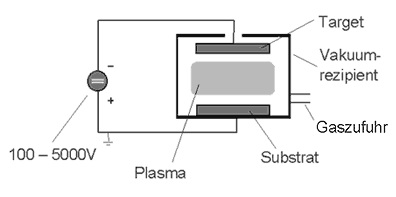Dry etching process for accelerated surface cleaning
Dry Etching Process for Accelerated Surface Cleaning
1. Introduction
Dry etching is a plasma-based process commonly used for cleaning surfaces in various industries, including semiconductor manufacturing, microelectronics, optics, and material science. The process uses reactive ions and gases to remove contaminants, residues, and unwanted layers from the surface without using liquid chemicals. This makes it ideal for delicate substrates and applications requiring high precision. 🔹 Key Applications: ✔ Semiconductor fabrication (removal of resist, cleaning before deposition) ✔ MEMS (Micro-Electro-Mechanical Systems) (removal of oxidation or contaminants) ✔ Surface preparation (cleaning before coating, bonding, or polishing) ✔ Optical coatings (cleaning before film deposition) ✔ Cleanroom processes (removal of organic and inorganic residues)2. Types of Dry Etching for Surface Cleaning
Etching Type Process Description Typical Applications Reactive Ion Etching (RIE) Uses a plasma to generate ions and reactive radicals that etch the surface. The ions are accelerated toward the surface to clean or etch it. Cleaning semiconductor wafers, removing photoresist layers Plasma Etching Similar to RIE but with less ion bombardment. Mainly relies on the chemical reaction of the plasma species with the material. Surface cleaning of metals, plastics, and polymers Ion Milling (Ion Beam Etching) Directed ion beam used to remove layers or contaminants by physical sputtering. High-precision cleaning of hard materials, such as metals and ceramics Inductively Coupled Plasma (ICP) High-density plasma used for etching. It provides a higher etching rate and more uniform results. Cleaning and etching for MEMS fabrication, microstructures Deep Reactive Ion Etching (DRIE) Alternating etching and passivation steps, used for creating deep, highly anisotropic etching profiles. Deep cleaning of silicon wafers, creating high-aspect-ratio microstructures3. Key Advantages of Dry Etching for Surface Cleaning
Advantage Benefit High Precision Can achieve sub-micron to nanoscale cleaning without damaging delicate substrates. Selective Cleaning Allows for selective etching of contaminants, leaving the desired material intact. No Liquid Chemicals Environmentally friendly and avoids the use of liquid solvents, reducing waste and contamination risks. Faster Processing Higher etch rates compared to wet cleaning processes, especially when using ICP or RIE. Versatile Works on a wide range of materials, including metals, polymers, oxides, and semiconductors. Uniformity Provides uniform etching across large surface areas, ideal for high-volume production.4. Process Steps for Dry Etching Cleaning
-
Preparation:
- The substrate is placed inside a vacuum chamber.
- Process gases (e.g., oxygen (O₂), argon (Ar), chlorine (Cl₂), SF₆) are introduced.
-
Plasma Generation:
- The gases are ionized to form plasma, which generates ions, electrons, and reactive radicals.
- These ions are directed towards the substrate to clean contaminants and unwanted material.
-
Surface Interaction:
- The ions and radicals chemically react with contaminants on the surface or physically etch them away.
- In some processes (e.g., RIE, ion milling), ion bombardment helps to dislodge contaminants.
-
Process Control:
- The etching process can be monitored in real time using techniques like optical emission spectroscopy (OES) or mass spectrometry to ensure efficient cleaning.
-
Post-Cleaning Inspection:
- The cleaned surface is inspected for contaminants using techniques like atomic force microscopy (AFM), scanning electron microscopy (SEM), or X-ray photoelectron spectroscopy (XPS).
5. Benefits of Dry Etching for Accelerated Surface Cleaning
✅ Faster Cleaning – Dry etching can clean surfaces in a matter of minutes, compared to longer wet-chemical processes.✅ Enhanced Surface Quality – Provides a high degree of cleanliness and uniformity.
✅ Reduced Contamination – Ideal for sensitive environments, such as cleanrooms or high-precision applications.
✅ Environmental Benefits – Less waste and fewer chemicals used compared to traditional wet cleaning methods.
6. Conclusion
Dry etching is an essential process for accelerated surface cleaning, especially in industries where high precision, minimal contamination, and uniformity are critical. Through various techniques like RIE, ICP, and ion milling, dry etching provides a fast, efficient, and environmentally friendly method to clean surfaces for applications in semiconductor, MEMS, optics, and other high-tech industries.Coating
Activation of Plastic Surfaces
High degree of degreasing
Activate and clean surfaces
High clearance


